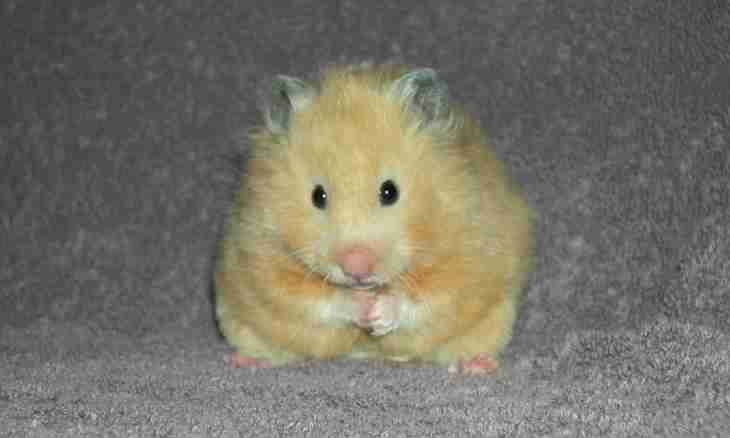Popular kind of rodents for house contents are dwarfish hamsters. They differ in the small sizes, lack of a tail and big mobility. Dwarfish hamsters meet several colors. Care for them is not put at all.
In pet-shops it is quite often possible to meet small rodents which are often accepted for mice. They are extremely mobile and have no tails. These are dwarfish hamsters. This kind of hamsters with a small weight – up to 50 g and very small size – up to 5.5 cm. For experiments and laboratory works dwarfish hamsters are not used.
Species of dwarfish hamsters
For home care and cultivation four species of dwarfish hamsters most often are on sale: Dzungarian hamster, Campbell's hamster, Taylor's hamster and Roborovsky's hamster. Hamsters received these names from the pioneers. The listed species of dwarfish hamsters differ in a hair color. Asian hamsters of usually gray color with a dark strip on a back, Campbell's hamsters – brown, Taylor's hamsters – dark gray as mice, and Roborovsky – golden, with a white paunch.
Began to bring dwarfish hamsters in house conditions at the beginning of the last century. The most rare species – Campbell's hamsters. Their fur which was more extended than at other hamsters. Besides, fur covered even soles of pads.
Features of dwarfish hamsters
Dwarfish hamsters are very mobile, like to climb and run, more spacious cages for the movement, than to other breeds of hamsters are required for them. Good help will be a wheel for run with a plain surface not to injure tiny pads, and a walking sphere for promenades about the room. The cage has to be made of frequent metal rods that the hamster could not get out independently. Dwarfish hamsters like to dig and be dug in therefore the bottom of a cage needs to be covered with sawdust and hay. In a cage surely there has to be a lodge, it is desirable from the natural, "breathing" material, for a privacy and a dream. Homyachkov it is necessary to hold on one, differently small animals, especially same-gender, can clash. At cultivation contain only one couple in a cage.
Leaving and food
It is necessary to change sawdust in a cage once a week. Instead of sawdust, sand can be used. In a cage it is necessary to establish fresh branches of trees, twigs which need to be updated periodically too. In a cage there has to be a feeding trough and a drinking bowl with water. Dwarfish hamsters drink less than the ordinary fellows, but it is all the same necessary to watch purity of water constantly. And here because of the mobility and higher metabolism the dwarfish hamsters eat as much how many and larger types. They need a tablespoon of grain mix in day and also vegetables, fruit, dandelion greens, a clover are necessary. Once a week they need to give fish, boiled meat, eggs or insects. Dwarfish hamsters are not aggressive, easily get used to the person and go on hands. If the hamster walks outside a cage, it is necessary to watch closely him that the small animal did not do harm to himself and did not cause a loss to surrounding objects.

